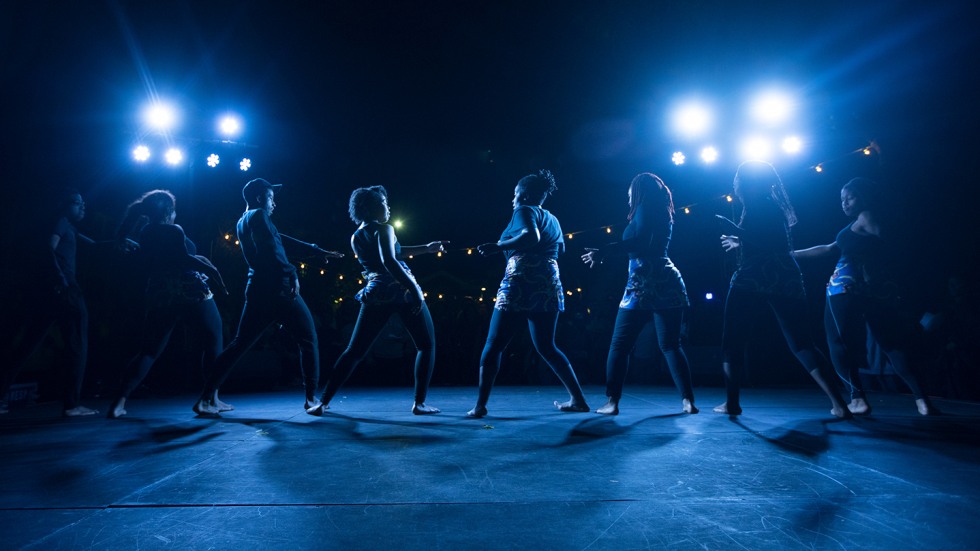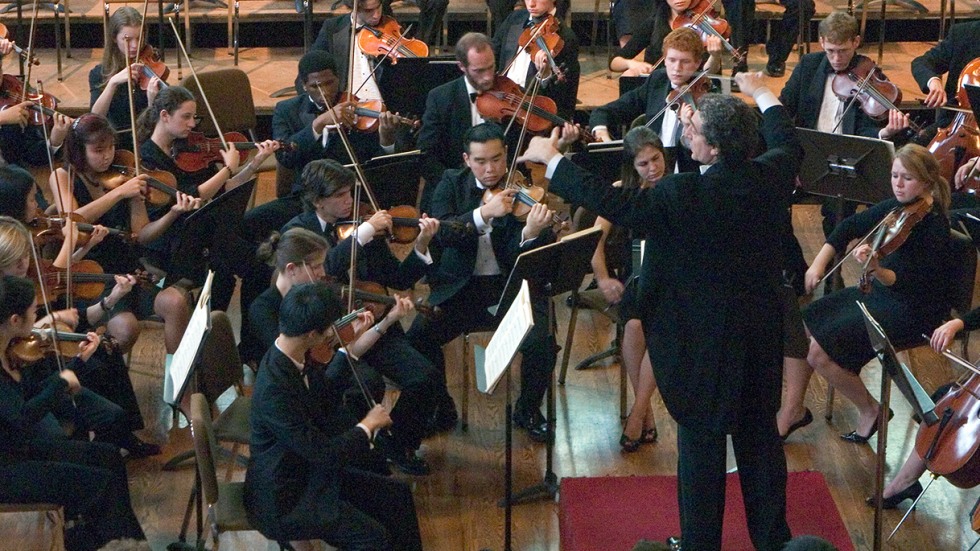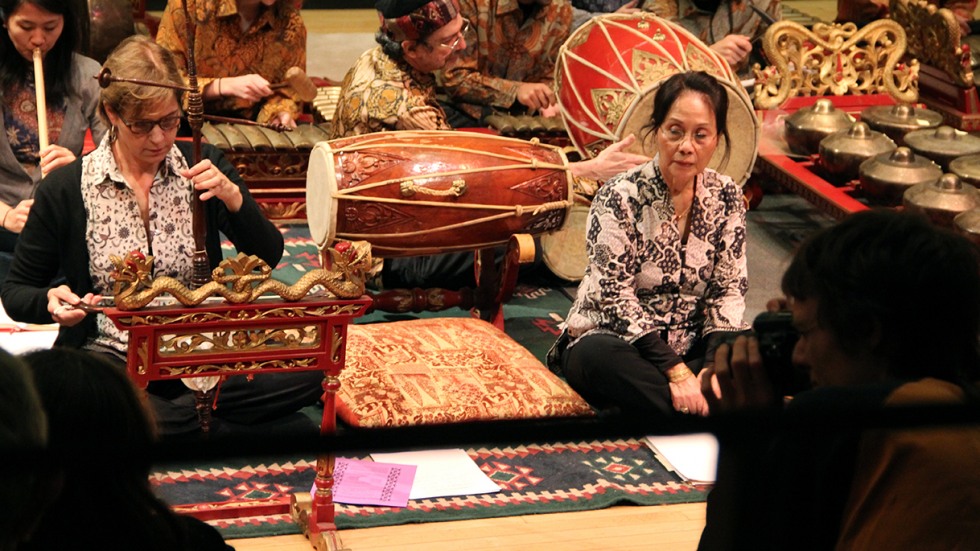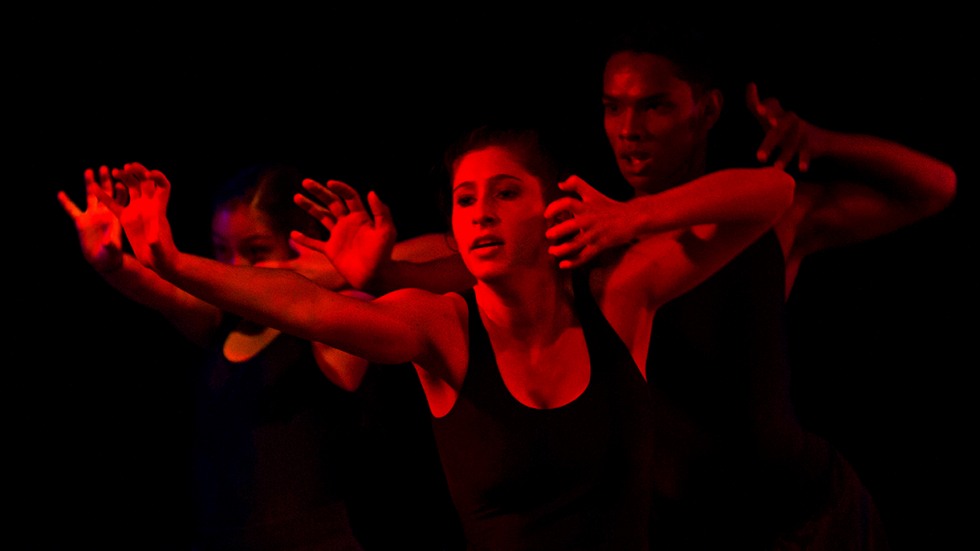PROVIDENCE, R.I. [Brown University] —For decades, Brown has envisioned the creation of a major performance space that would serve as a hub for music, dance, theater and multimedia arts on campus. The University has taken a critical step forward in realizing this vision with authorization to commence the selection of an architect to design a new performing arts center.
A Feb. 11 vote by the Corporation of Brown University’s Budget and Finance Committee at the Corporation’s annual winter meeting paves the way for a state-of-the-art facility that will showcase the centrality of the arts at Brown and create a publicly accessible venue for groundbreaking new works. The performing arts center will advance a University priority to fully integrate the arts into the Brown experience and provide a welcoming artistic space for the arts community.
“At Brown, we see the arts as a catalyst for creativity, discovery and innovation,” President Christina Paxson said. “The performing arts center will attract the best faculty, visiting artists and students to Brown and provide them with the necessary diversity of spaces to experiment, work and perform.”
The new center is envisioned as serving the campus as well as artists and patrons of the arts beyond Brown, Paxson said: “We see this performing arts center as an asset for our campus, and also our local community, with benefits for artists and lovers of the arts throughout Rhode Island.”
Architect selection is expected to take approximately three months. It is an important step in a process that requires planners to assess proposed programming for the performing arts center and evaluate whether the programming aligns with the anticipated site of the building.
The anticipated home of the performing arts center is between Angell and Waterman streets on the west side of The Walk, a series of linked green spaces that connect Brown’s main campus and its Pembroke campus. The site is currently occupied by a parking lot, three residential structures and two academic buildings.
If the site is confirmed in the site validation process, the University expects to submit the site’s approval for a Corporation vote in May.
A long-term plan
As early as 1974, Brown envisioned creating a center for the performing arts that could be used by all of the arts departments and groups on campus.
At the time, the University’s 12-member Committee on the Arts — which counted a Nobel Laureate in physics, a poet-playwright and a pioneer in the development of solar cells among its ranks — wrote that such a center would be “a cultural force of great value to Brown University and to the community, greater than can be provided by these departments individually” and that it would “contribute as much to the education of those not primarily concerned with the arts as the artists would gain from the presence of other disciplines.”
In advocating for a highly visible, publicly accessible performing arts center that would encourage exploration across disparate fields of study, the group articulated values that endure at Brown four decades later.
Professor of Music Joseph Butch Rovan said the addition of a performing arts center on campus will play an integral role in cultivating creative expression across fields of study, a key theme in the University’s strategic plan. Rovan directs the Brown Arts Initiative, which will celebrate its public launch with a major arts symposium in March, and whose activities will have a natural home in the performing arts center.
“The Brown Arts Initiative supports the integration of arts research and inquiry with exploration in scholarship and practice,” Rovan said. “Our goal is to advance new forms of knowledge and new methods of creative expression across all departments and art forms. The new performing arts center is central to that mission.”
The arts center is proposed as a space that is welcoming to students, faculty and practicing artists from diverse backgrounds, while expanding Brown’s teaching capacity in the arts. Currently, 60 percent of Brown undergraduates declare the arts as their principal co-curricular interest, and Brown’s strategic plan emphasizes creating an environment in which artists operating at the highest levels of their crafts learn from and inform students and scholars in the full range of academic disciplines.
“In concert with the Granoff Center for the Creative Arts and other arts facilities on campus, the new performing arts center will serve as a focal point for creative expression and an incubator for experimentation, collaboration and engagement,” Rovan said.
Space for artists and non-artists alike
While the architect selection process is just beginning, the specific concept for the performing arts center
has been carefully developed over the course of several years, said Russell Carey, Brown’s executive vice president for planning and policy. Fundraising for the project continues as part of the $3-billion BrownTogether comprehensive campaign Brown announced in fall 2015.
“As envisioned, the performing arts center will feature state-of-the-art spaces that encourage use by diverse audiences,” Carey said.
With a proposed main performance hall and a slightly smaller performance and rehearsal hall, the center will be able to accommodate large ensembles — including full orchestras, choruses or opera companies — as well as mid-sized dance and theater performances and more intimate, immersive multimedia experiences. Performance spaces are expected to host groups from Brown, the Providence community and artists from around the world.
Plans include venues in the building that will feature advanced acoustics as well as innovative seating, lighting configurations and staging possibilities. In addition, the performing arts center is expected to include professional sound recording and multimedia digital production capabilities.
“These elements will expand the possibilities for creating and staging new works that combine art forms, reflecting Brown’s emphasis on collaboration and discovery,” Rovan said. “In addition, visiting artists, faculty and students will be able to document their productions for further study and artistic use.”
A planned acting studio will be an exceptional resource for Brown’s Department of Theatre Arts and Performance Studies, Rovan said. As envisioned, faculty and students — both graduate and undergraduate — will make use of this space to discuss and experiment with the theory and practice of acting and directing. The studio will provide ample space for master classes, artistic critique and demonstrations by professors of the practice and visiting artists, including a host of renowned Brown alumni in the arts.
A dance studio is expected to accommodate the learning and rehearsal needs of Brown’s dance program and support workshops and master classes with guest artists from different traditions and techniques. The center also should feature practice rooms and instrument studios where instruction in music can take place.
The center is being planned as a space to host symposia, festivals and other events. With a café in the lobby expected to include space for visual art displays, the center is envisioned as a gathering place that will welcome all Brown students and help to cultivate a deep appreciation for the arts among non-artists.
The performing arts center will solidify the University’s commitment to the arts as a central element of the Brown academic experience, Paxson said.
“Brown has an opportunity to be the leading institution among its peers for the full integration of the arts into the academic experience,” she said. “A vibrant center for the performing arts is a part of that vision.”



